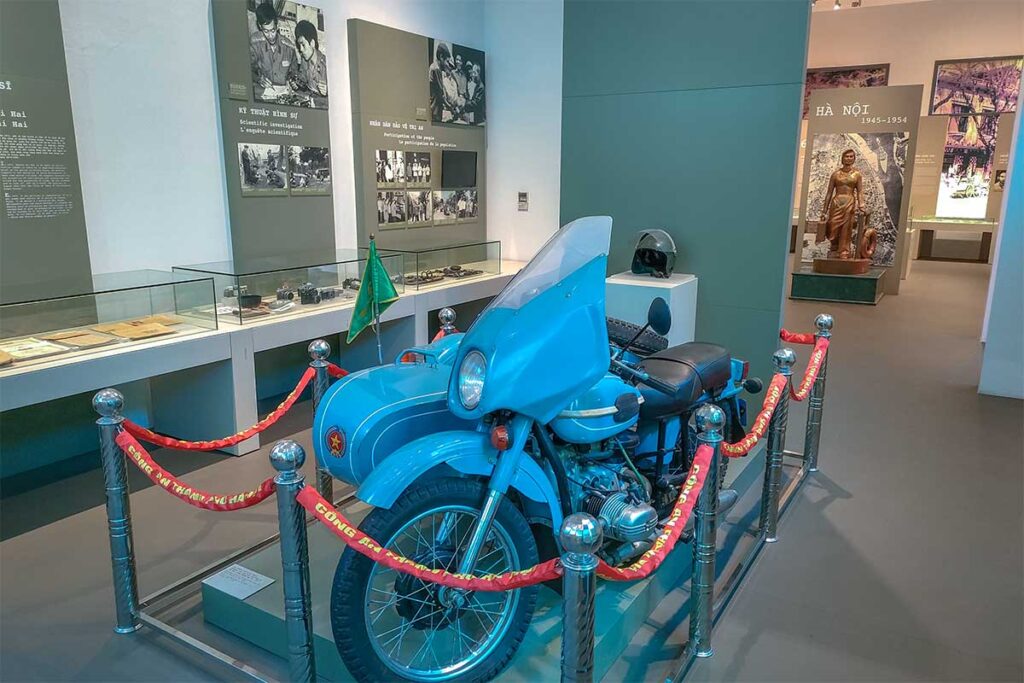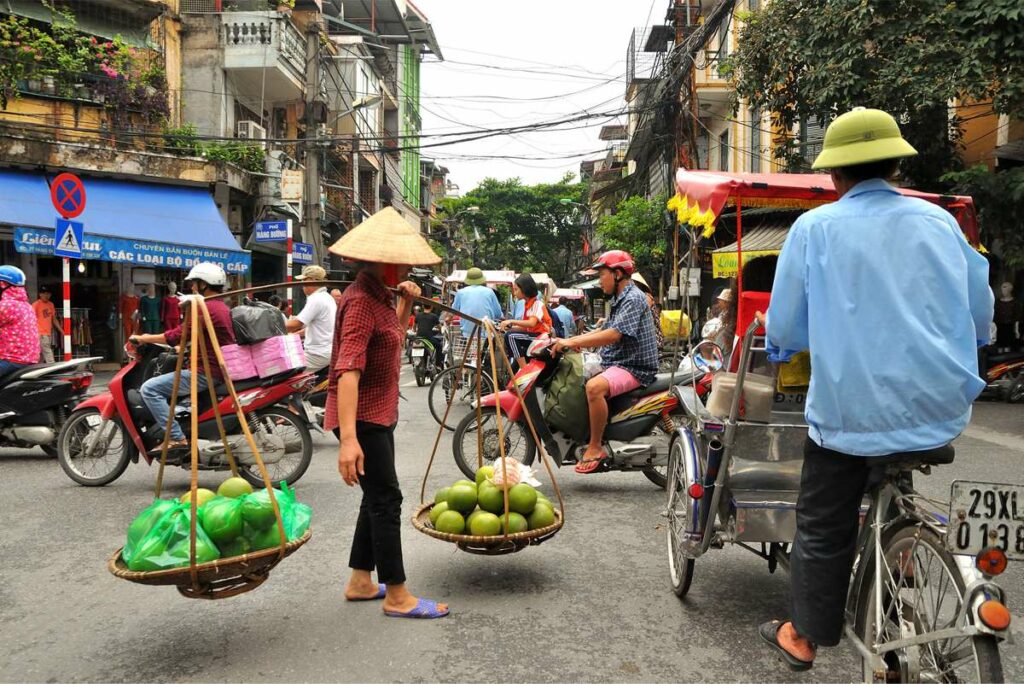What is the Hanoi Police Museum about?
The Hanoi Police Museum is a specialized museum dedicated to the history, structure, and evolution of Hanoi’s police force from 1945 to the present day. Originally known as the House of Traditions of the Hanoi Police, the collection was relocated and opened in its current form in 2015 to mark the 70th anniversary of Vietnam’s police forces. The museum features themed rooms with police uniforms, weapons, documents, and crime-fighting tools, alongside politically framed exhibits that reflect Vietnam’s revolutionary history—making it more of a niche interest stop than a mainstream tourist attraction.
Visiting information
Entrance Fee
Admission is completely free, with no ticket required.
Opening Times
The museum is open to visitors from 8:30 AM to 11:30 AM and 1:30 PM to 4:30 PM, Tuesday to Saturday. It is closed on Sundays and Mondays.
Address
You’ll find the museum at 67 Ly Thuong Kiet Street, in Hanoi’s quiet and historic French Quarter, south of Hoan Kiem Lake.
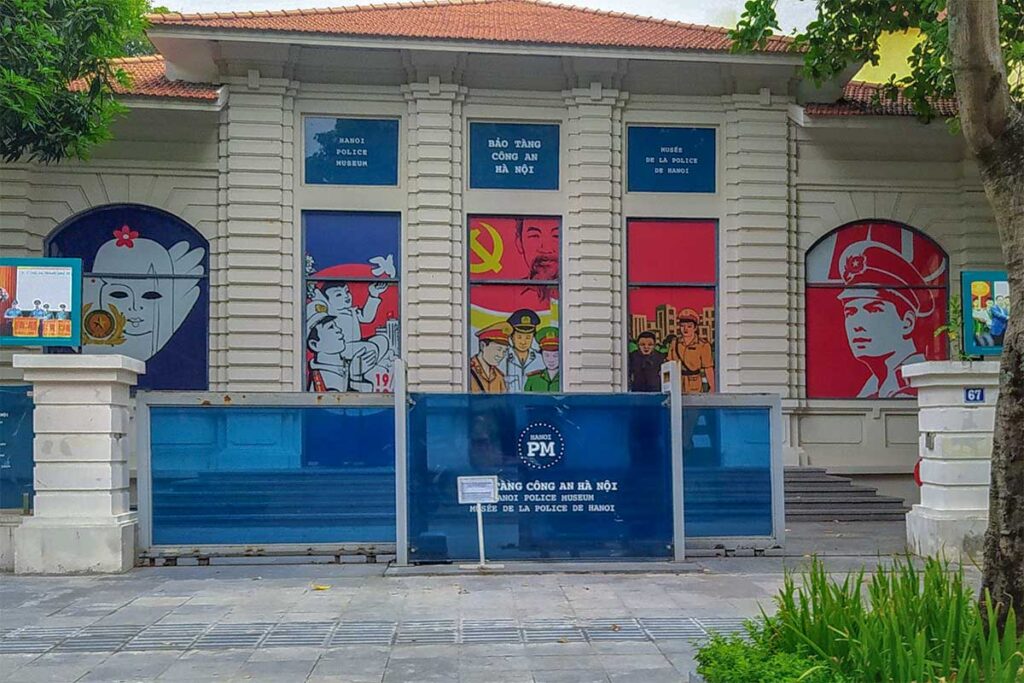
How to get there
- On foot: From Hoan Kiem Lake or the Old Quarter, it’s about a 15–20 minute walk. The route is pleasant and passes several landmarks, making it easy to combine with other stops.
- By Grab or taxi: A car or motorbike ride from central Hanoi typically costs 30,000–50,000 VND and takes under 15 minutes.
Time needed
Most visitors spend 30 to 60 minutes here, depending on their interest in the topic.
Facilities
The museum is air-conditioned and has restrooms, but no gift shop or café. It’s often very quiet, and there may be no staff at the reception — you can simply walk in and start exploring.
Highlights of the Hanoi Police Museum
1. President Ho Chi Minh with the Hanoi Police
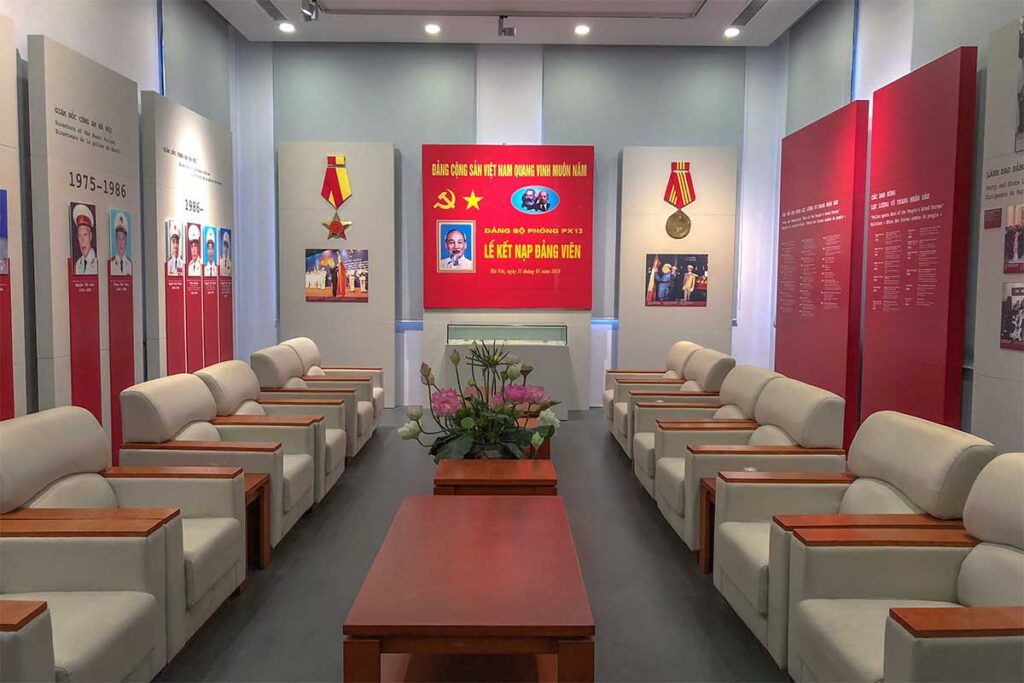
This room showcases Ho Chi Minh’s connection to the capital’s police force, with photos and memorabilia from his visits after independence in 1945. It highlights his guidance and symbolic support, especially during the early years of national reconstruction.
2. Statues of all Hanoi Police Forces
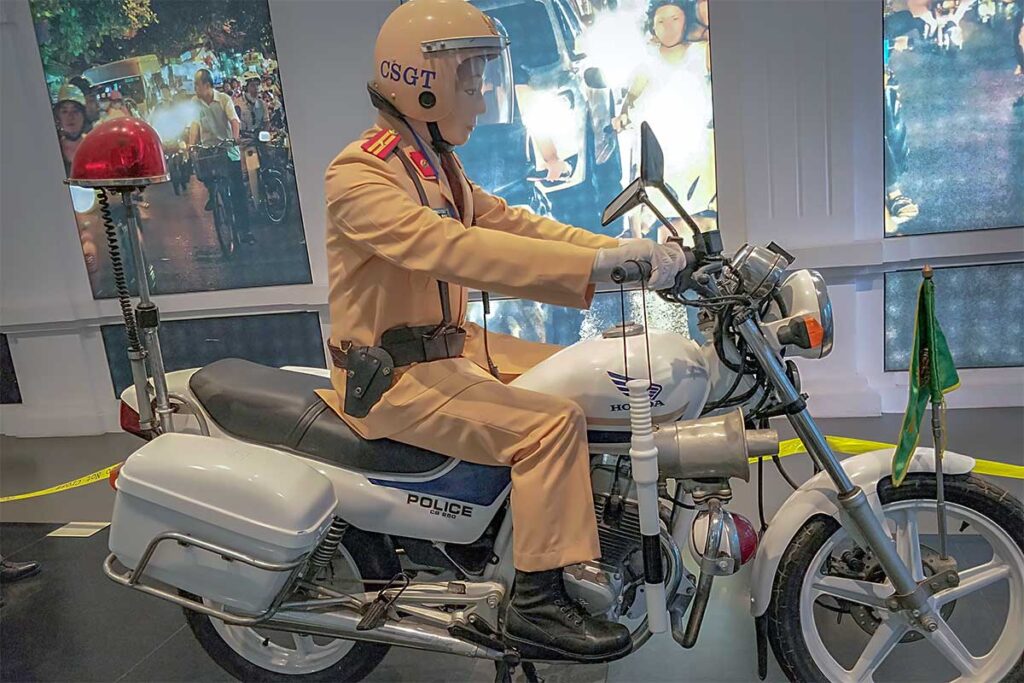
A row of life-sized statues represents the different branches of the police — traffic, riot, fire, security, and criminal. Each figure wears a distinct uniform and is accompanied by a short explanation of their duties and equipment.
3. Evolution of police uniforms (1945–2015)
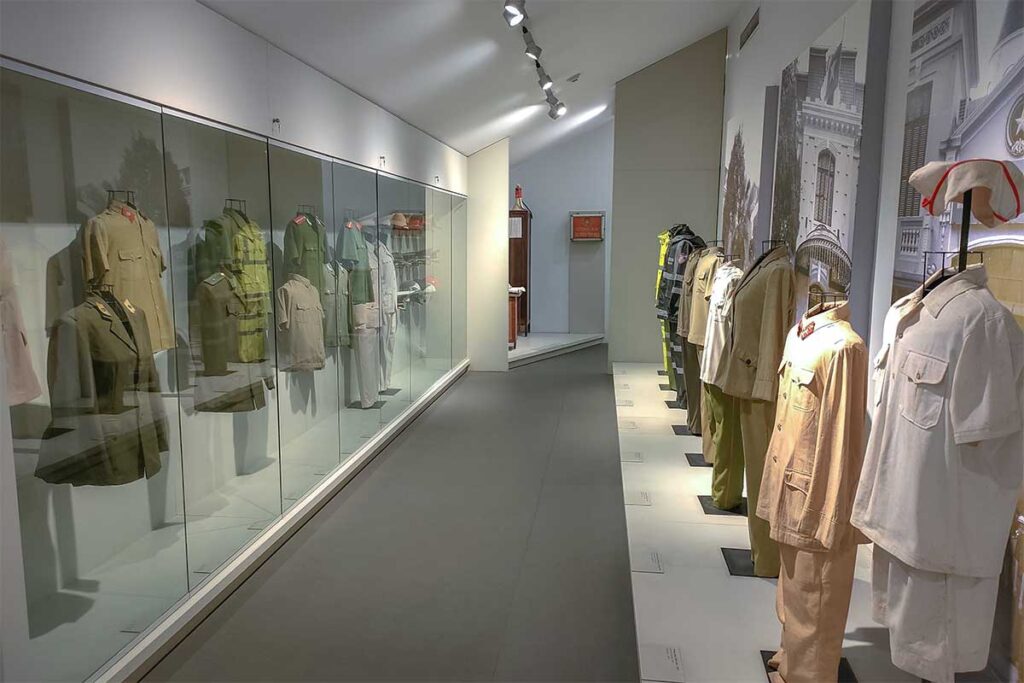
This exhibit traces the changing look of Vietnam’s police uniforms across seven decades. Displays include early khaki outfits, the recognizable white traffic police uniforms, and more modern tactical gear used today.
4. Police Station Model
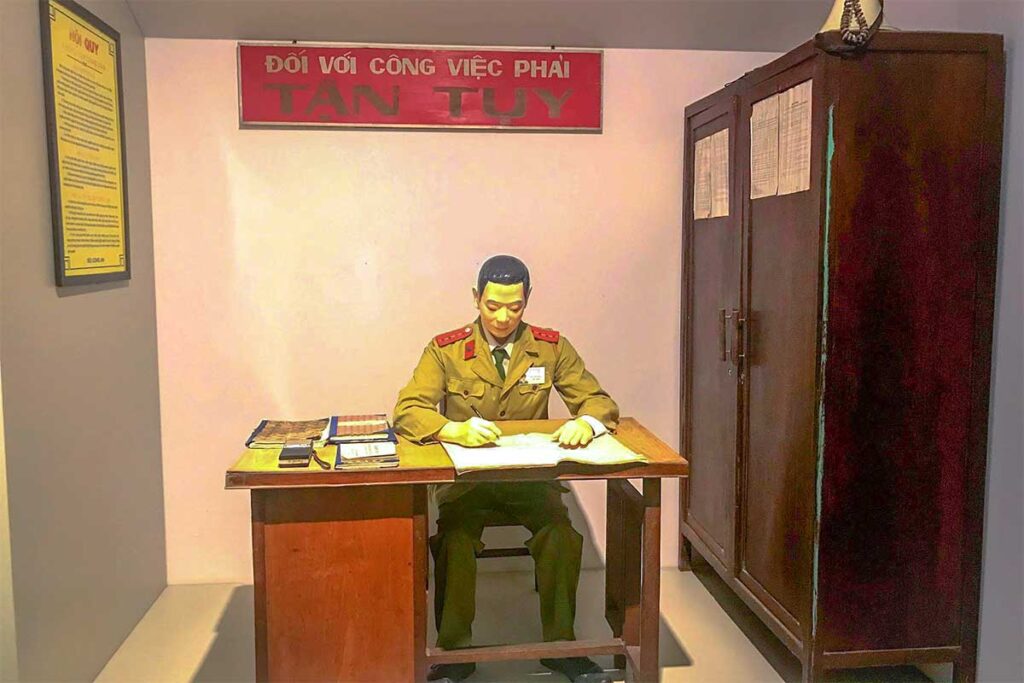
A miniature model shows what a standard police station in Hanoi looks like, complete with reception desk, meeting room, and holding cells. It helps explain how community-level policing operates in Vietnamese neighborhoods.
5. Hanoi Police 1945–1954 (Post-independence & French resistance)
This section covers the chaotic early years after independence, including efforts to maintain order during the First Indochina War. Exhibits include handmade ID cards, resistance propaganda, and early police documents.
6. Hanoi Police 1954–1975 (Vietnam War era)
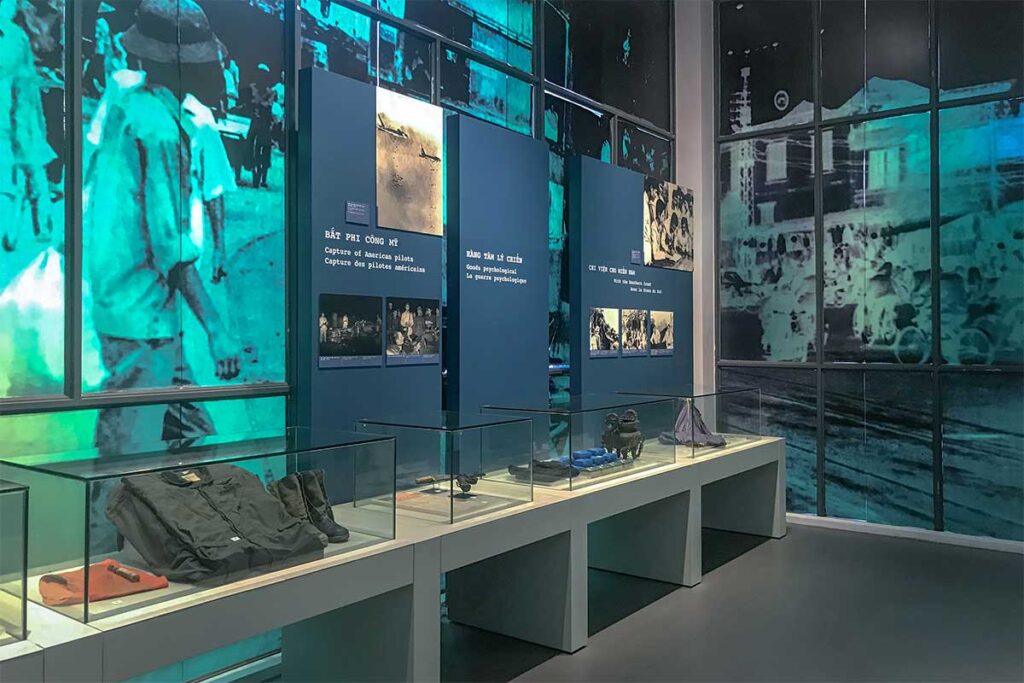
Focused on the American War period, this room details efforts to protect Hanoi during air raids, counter sabotage, and respond to emergencies. There are displays of bomb disposal gear, wartime police equipment, and captured materials from spy networks.
7. Hanoi Police 1975–1986 (Post-war & reunification period)
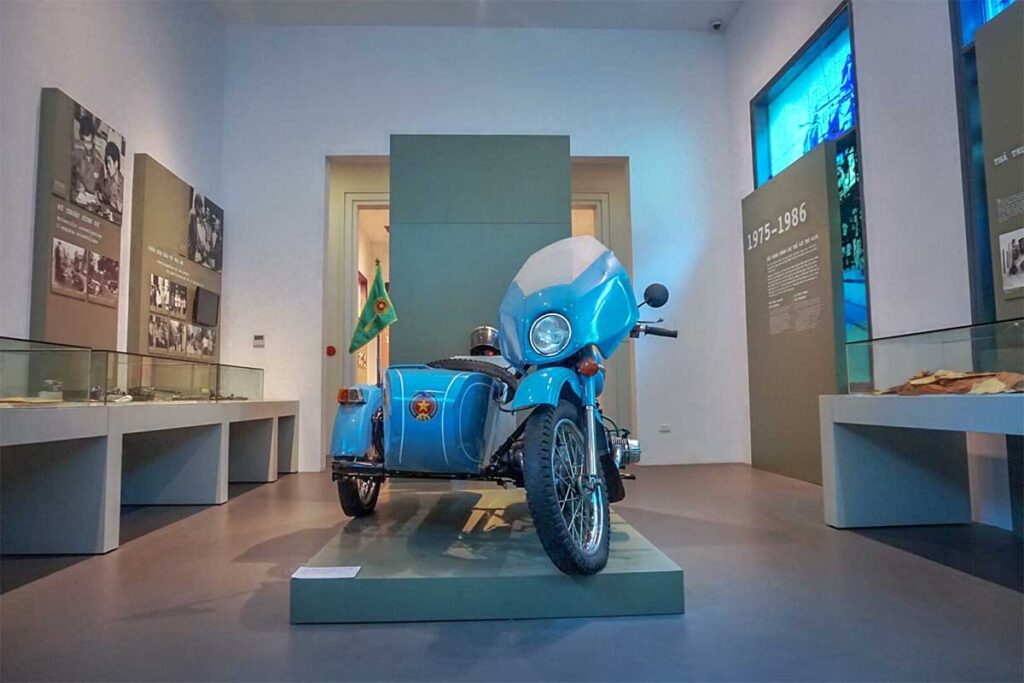
After reunification, the police were tasked with stabilizing society during economic hardship and integrating systems from North and South Vietnam. Exhibits cover ration control, early reform efforts, and the reorganization of internal security.
8. Hanoi Police from 1986 onward (Modern reforms and challenges)
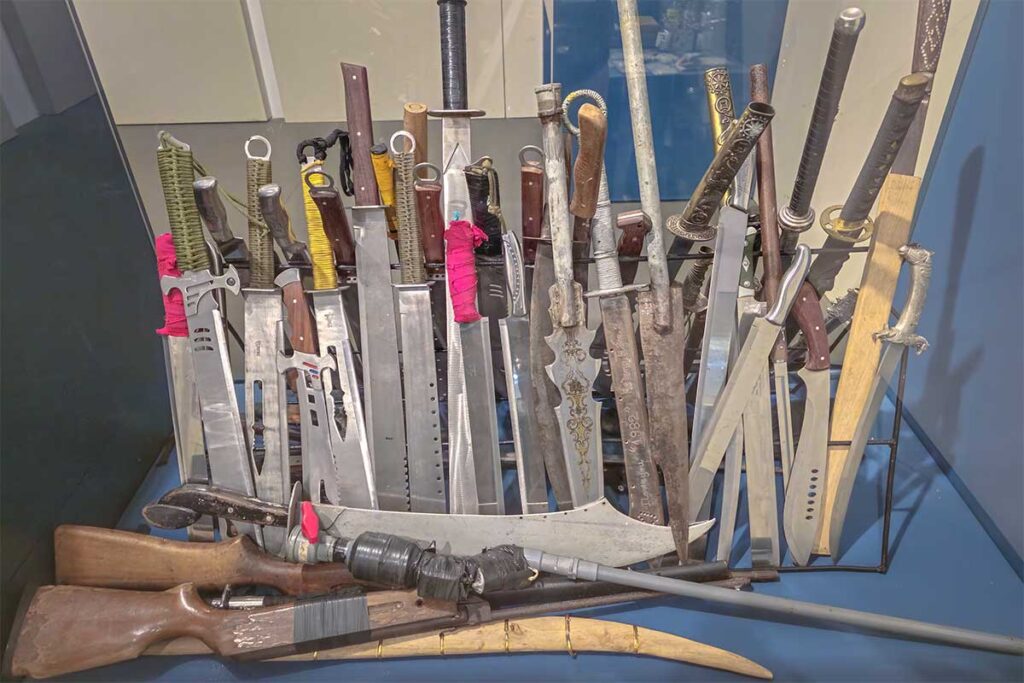
The final room looks at policing in the Doi Moi era and beyond — including cybercrime, traffic safety, and international cooperation. Notable items include a motorbike used on patrol and a wig worn by a student caught cheating in exams. One corner of the museum even resembles a real office — and in at least one case, visitors have mistaken an actual working room for part of the exhibit.
Nearby sights to combine a visit
This museum isn’t a destination by itself — the best way to enjoy it is to combine your visit with other landmarks in Hanoi’s French Quarter.
Hoa Lo Prison Museum (100m)
Located just across the street, Hoa Lo Prison Museum offers a powerful look at Vietnam’s colonial past and wartime struggles. It’s best known for its preserved prison cells, French guillotine, and exhibits on both Vietnamese revolutionaries and American POWs.
Hanoi Book Street (250m)
A short walk away, Hanoi Book Street is a tree-lined pedestrian alley filled with local bookshops and coffee spots. It’s a peaceful place to take a break and browse, especially between museum visits.
Vietnamese Women’s Museum (600m)
The Vietnamese Women’s Museum features modern exhibits on the roles of women in family life, ethnic traditions, and Vietnam’s wars. It’s one of the most engaging and thoughtfully designed museums in Hanoi.
St. Joseph Cathedral (800m)
If you’re walking from the Old Quarter, St. Joseph Cathedral is a natural stop along the way. This neo-Gothic landmark dates back to 1886 and adds a European flair to Hanoi’s historic center.
Hoan Kiem Lake (850m)
The southern edge of Hoan Kiem Lake is easily reachable on foot and offers a relaxing contrast to Hanoi’s busy streets. On weekends, the surrounding area becomes a car-free zone with live music, games, and local street food.
Located in Hanoi’s French Quarter, the museum is ideal to combine with quiet café stops and colonial architecture strolls.
Read our full French Quarter guide for more ideas.
Is the Hanoi Police Museum worth visiting?
For most travelers, the Hanoi Police Museum is not a top attraction and doesn’t make our list of the best museums in Hanoi. Its theme is niche, the displays are text-heavy, and the tone leans strongly political — which may not appeal to casual visitors.
That said, it’s free, air-conditioned, and only takes about 30–60 minutes to explore. If you’re already planning to visit nearby sights like Hoa Lo Prison, it’s an easy and quiet detour. It’s also worth a look for those specifically interested in police culture, public security, or Vietnam’s internal history.
In short: skip it as a standalone stop, but consider dropping in if you’re nearby or curious.
